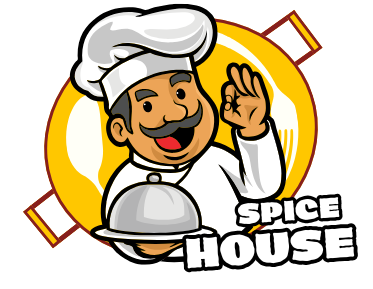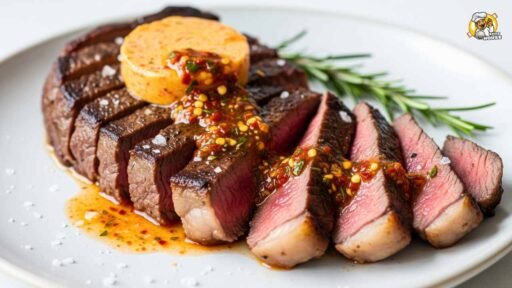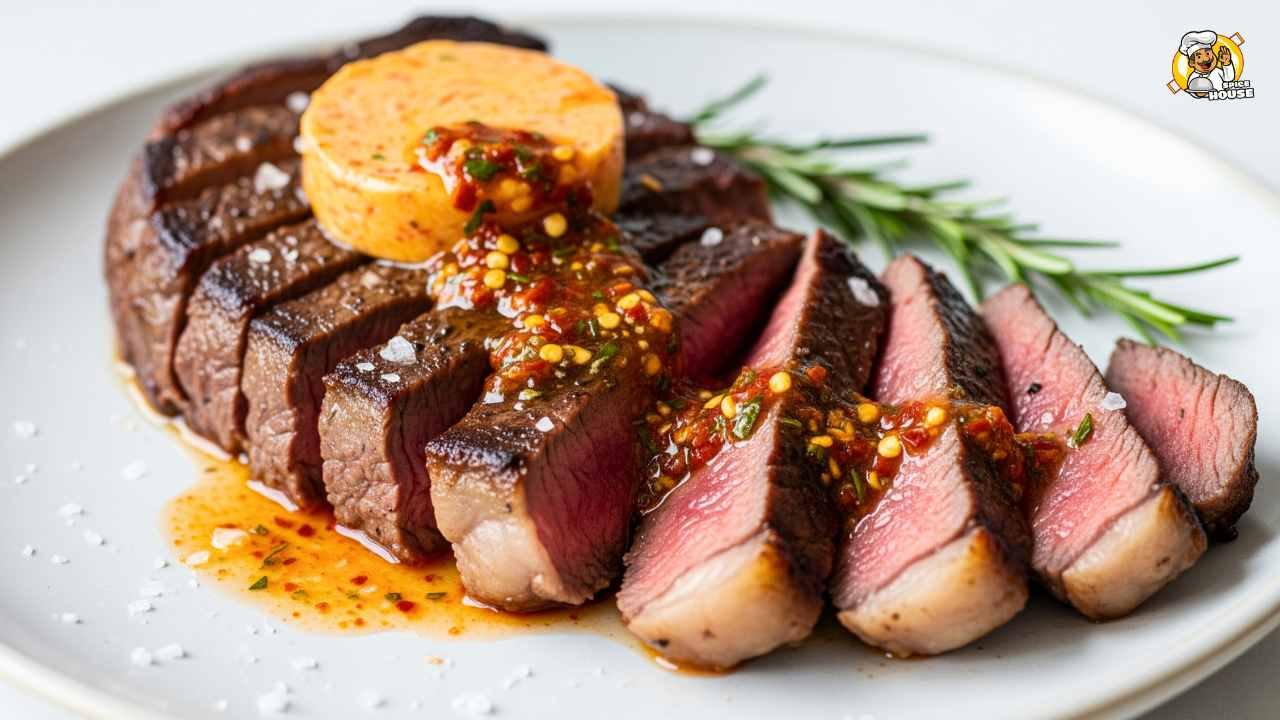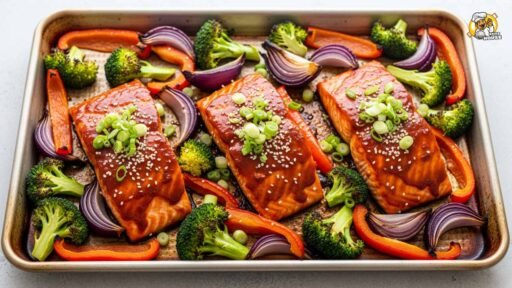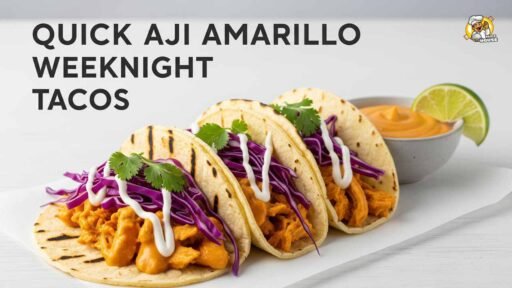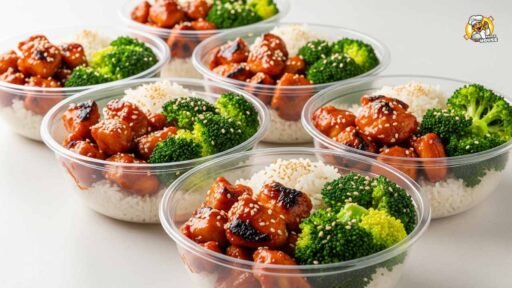Here’s the hard fact: food-away-from-home prices rose more than three times faster than food-at-home in 2024. According to the U.S. Bureau of Labor Statistics, restaurant prices climbed roughly 4% year-over-year while grocery prices rose just over 1%. That gap has pushed diners to recreate steakhouse-quality meals in their own kitchens, often with premium pantry shortcuts. And one flavor—Calabrian chili—sits squarely in the crosshairs of that shift.
The trend is simple, but not small. Finish-at-home is no longer a pandemic blip. It’s a consumer habit. Grocers sell it. DTC brands market it. Goldbelly ships it. And delivery apps feel it nibbling at ticket sizes. The tension affects everyone in the chain: investors watching margins, consumers balancing taste with costs, and employees whose hours depend on where the next dollar goes—to the kitchen table or the corner steakhouse. In this piece, we show you how to execute a restaurant-level Calabrian Chili Butter Steak, and we also unpack the data, the players, and the stakes behind the sizzle.
The Data:
-
Inflation divergence: According to the U.S. Bureau of Labor Statistics, food-at-home prices were up roughly 1% year-over-year in 2024, while food-away-from-home prices rose about 4%. That spread encourages “premium nights in” and shifts discretionary spend from restaurant checks to grocery baskets and specialty ingredients.
-
Heat goes mainstream: Whole Foods Market’s Top 10 Food Trends report flagged “complex heat” as a defining flavor wave, calling out global peppers—Calabrian included—moving from chef-only to household staples. Kalsec’s Global Trends in Hot & Spicy study adds the kicker: 74% of consumers say they enjoy spicy foods, and a majority choose medium heat or higher.
-
Kits stick around: Grand View Research estimates the global meal kit market in the mid-teens of billions of dollars with a double-digit CAGR through the decade. The exact figure varies by firm, but the direction is clear. Finish-at-home steaks, DIY pasta nights, and “restaurant kits” aren’t a fad. They’re a steady category with margin implications for grocers, meal kit companies, and restaurants moving product on platforms like Goldbelly.
Sources say search interest in “Calabrian chili” is about double what it was several years ago. Even if the precise number shifts by tool, the direction tracks with what you now see stocked at Trader Joe’s, Whole Foods, and premium online grocers: Calabrian chili pastes, oils, hot honeys, and compound butters.
Calabrian Chili Butter Steak: Restaurant Finish at Home (Step By Step Guides)
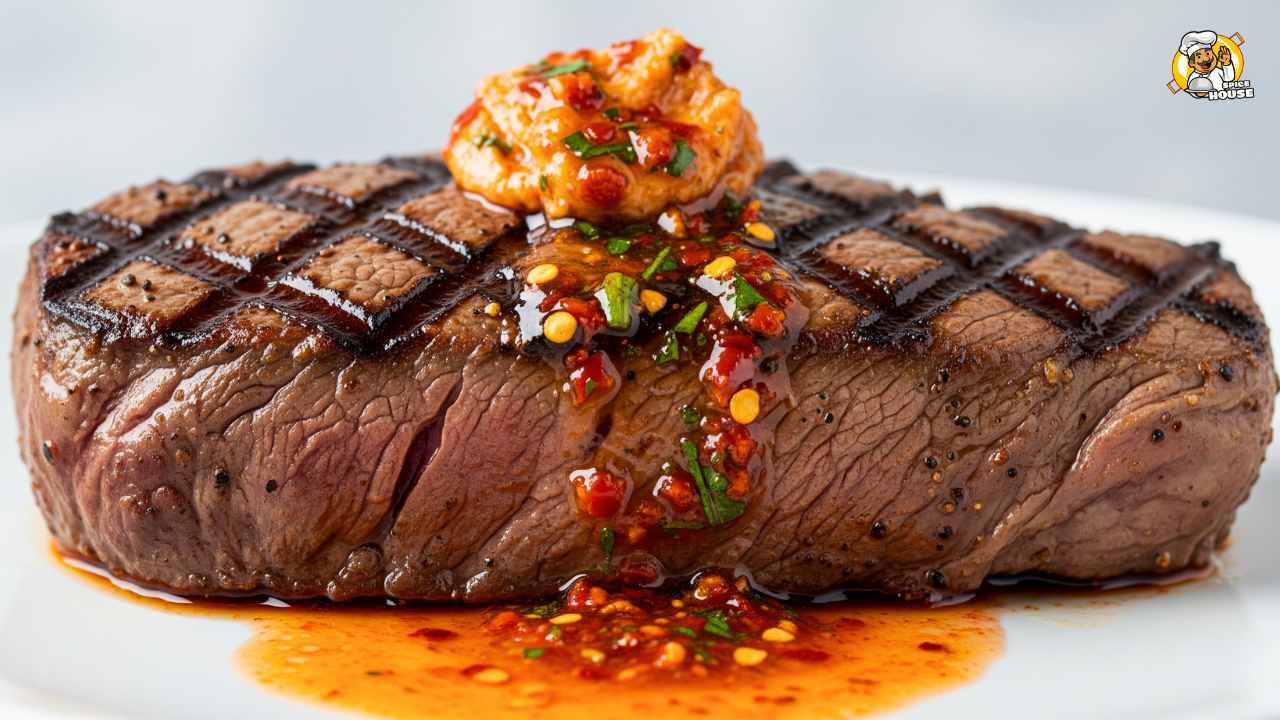
Note: This is geared for a 12–16 oz ribeye or strip steak, 1.25–1.5 inches thick. Adjust times for thinner cuts. Target medium-rare unless you prefer otherwise. You’ll need a cast-iron or heavy stainless skillet, an oven, and an instant-read thermometer.
Step 1: Choose the Steak and Set Your Foundation
Start with the right cut. A well-marbled ribeye gives you lush fat that merges with chili butter like a handshake. A New York strip brings chew and a cleaner beefy bite. Either works. Look for even marbling, dry surfaces, and a thickness of at least 1.25 inches. That thickness buys you two things: a deep crust and a rosy interior.
Salt is your quiet force multiplier. Dry-brine the steak with kosher salt at about 0.5–0.75% of the meat’s weight. For a one-pound steak, that’s roughly 2 to 3 grams per side—about a generous pinch or two. Salt both sides, set on a rack, and refrigerate uncovered for at least an hour, up to overnight. The surface dries, the seasoning penetrates, and the sear improves.
Thirty to forty-five minutes before you cook, pull the steak from the fridge to lose the chill. Pat dry. A dry surface equals better browning. Gather your tools: heavy pan, high-heat oil (grapeseed, avocado), unsalted butter, Calabrian chili paste (or Italian Bomba), lemon, garlic, fresh thyme, and a sturdy spoon for basting. If you have a good finishing salt, keep it handy. If you don’t, don’t sweat it—your chili butter will carry the big flavors. Here’s the thing: your prep choices decide 80% of the outcome. Heat is just the closer.
2: Build a Calabrian Chili Compound Butter That Belongs on a Menu
Calabrian chiles deliver fruity heat with a little smoke and a savory edge—medium on the Scoville scale, not a dare. You want a butter that’s bold but balanced.
Mash together in a bowl: 4 tablespoons unsalted butter (softened), 1 to 1.5 tablespoons Calabrian chili paste, 1 small garlic clove microplaned, zest of half a lemon, 1 teaspoon lemon juice, a pinch of flaky salt, and 1 teaspoon chopped parsley. Optional but recommended: 1 anchovy fillet, smashed to a paste. It melts into the butter and adds depth without fishiness. If you like a little “swicy,” add 1/2 teaspoon honey. That tiny sweetness tames the heat and caramelizes under the broiler like a restaurant finish.
Taste a dab. You want fruity heat up front, butter in the middle, and a bright citrus finish. Adjust salt and lemon to taste. Form the butter into a small log on parchment, wrap, and chill while your steak tempers. Cold butter holds its shape for basting and won’t break as fast in a hot pan.
Could you buy pre-made Calabrian chili butter? Sure. Many grocers now stock versions. But your own tastes better and takes five minutes. Also, you’ll use it on everything—charred broccolini, grilled shrimp, even eggs. If you only make one pantry upgrade this season, this is it. It’s your “restaurant in a spoon.”
Step 3: Nail the Sear Like a Pro
Heat your oven to 425°F. Place the rack in the middle. Set your skillet over medium-high heat. Give it time. When a drop of oil shimmers and runs like water, the pan is ready. Add 1 tablespoon neutral oil. Lay the steak in, away from you, to avoid splatter. It should roar. Don’t move it for 2 to 3 minutes. Browning is chemistry and patience.
Flip. Sear the second side for another 2 to 3 minutes. Now hit the edges, especially the fat cap, for 30 to 45 seconds. Tip the steak on its side and render that fat into the pan. This extra step builds flavor in the pan drippings and gives you a cleaner bite.
Turn the heat to medium. Add 1 to 2 tablespoons of your chilled Calabrian chili butter, plus a smashed garlic clove and a sprig of thyme. Tilt the pan. Spoon the foaming butter over the steak for 30 to 45 seconds. The butter will pick up chili color and perfume the crust. Don’t drown it. You’re building a glaze, not a bath.
If your steak reads 95–105°F in the center now, you’re on track for a perfect oven finish. If it’s cooler, take another minute on the stovetop. If it’s already near 115°F, shorten the oven time later. Trust your thermometer, not the clock.
Step 4: Finish in the Oven, Restaurant-Style
Slide the whole pan into the 425°F oven. Roast to your target temp, checking every 3 to 4 minutes. For medium-rare, pull at 125–128°F; carryover heat will drift you to 130–135°F. For medium, pull at 135–138°F. Rare eaters should exit around 120–122°F. These numbers matter. They’re the line between “great” and “did we overdo it?”
Halfway through the oven finish, baste once more with another small knob of Calabrian butter. The heat will bloom the chili oils and set the crust. If you like a touch of char, flick the broiler on for 60 seconds at the end. Mind your distance; the butter can scorch.
Remember the “why”: restaurants sear, baste, and finish in the oven because it evens the heat and protects the crust. You’re borrowing that system. You’re also layering flavor rather than dumping it all at the end. That’s how you get the glossy, lacquered look you see under a steakhouse dome.
Pull the steak to a warm plate. Don’t cut yet. Tent loosely with foil for 6 to 8 minutes. The juices will redistribute, and the temperature will settle. Waiting is boring; it’s also the cheapest upgrade there is.
Step 5: Rest, Slice, and Set the Plate Like You Paid for It
After the rest, pool a small spoonful of Calabrian butter on the plate and set the steak on top. The heat will melt it into a slick that coats every slice. Finish with a sprinkle of flaky salt and a squeeze of lemon. That acid keeps the heat lively and the fat in check.
For a ribeye, slice across the grain into thick planks. For a strip, first find the grain, then cut at a slight bias. Keep the slices together on the plate to hold warmth. Spoon the pan drippings over the top, catching the chili flecks and garlic for color and punch.
Round it out with fast sides that stand up to heat and butter. Charred broccolini with lemon and olive oil. Crispy potatoes tossed with rosemary and a whisper of the chili butter. A simple arugula salad with shaved Parm and lemon. If you drink, pour a southern Italian red—Aglianico or a juicy Primitivo—or go playful with a chilled Lambrusco. Not drinking? Sparkling water with a lemon wheel does the same reset.
Store leftover butter in the fridge for a week or freeze it for a month. Tomorrow, swipe it on toasted bread under a fried egg. Or melt it over roasted mushrooms. Look, once you taste this, you’ll start scanning the fridge for excuses.
The People
“A former meal-kit executive told me, ‘Finish-at-home isn’t cannibalizing takeout one-to-one, but it’s stealing the Saturday night check. Consumers will splurge on a better cut and a $6 specialty chili instead of a $60 steak delivery plus fees. That’s a margin story as much as a flavor story.’”
Chefs echo the technique shift more than the ingredient hype. A seasoned steakhouse chef I spoke with put it plainly: “People think it’s the flame. It’s the systems. Salt ahead. Dry the surface. Sear hot. Baste with intent. Finish in the oven. Rest. That’s the restaurant playbook you can run at home.” The Calabrian butter, in other words, isn’t a trick. It’s a smart layer that rides on proper fundamentals.
Grocers see the basket data. When a shopper buys a premium cut, they often add a high-margin flavor item—chile paste, finishing butter, or infused salt. That $3–$8 add-on, scaled across millions of baskets, is not trivial. It’s part of why Whole Foods elevates “complex heat” in trend decks and why mainstream chains carry Italian Bomba sauce right next to pestos.
I asked a specialty butcher about customer questions. “They’re less shy now,” he said. “People ask for inch-and-a-half cuts. They want to know how to baste. They show us screenshots of compound butters. Three years ago, that was rare.” The knowledge curve has shifted. The audience isn’t just watching cooking shows. They’re running the play on Tuesday nights.
The Fallout
Let’s be blunt: this smells like a category the big platforms will fight over. If more households run a “restaurant night in” twice a month, delivery platforms risk frequency and ticket size. That pushes DoorDash and Uber Eats to promote grocery delivery harder, including premium meats and specialty condiments. It also nudges them into cross-promotions with meal kits and specialty retailers. Expect more “steak night bundles” with a button tap.
For grocers, finish-at-home is margin-accretive when shoppers buy premium proteins and attach high-value flavor SKUs. The incremental profit on a jar of Calabrian chili paste often beats commodity items by a mile. Retailers will keep expanding private-label versions, squeezing branded suppliers on shelf fees and promotions. Whole Foods already did the trend work; others will follow with house-label chili oils and butters.
Restaurants won’t stand still. Many kept their pandemic-era “finish-at-home” SKU pipelines via Goldbelly and in-house DTC. Expect steakhouses to bundle dry-aged cuts, compound butters, and instructions, riding on brand equity rather than floor capacity. It’s a hedge against soft Saturday reservations and a way to monetize their name in markets they don’t serve. Analysts now predict that the off-premises line item won’t shrink back to the 2019 mix; it will morph. The mix shifts from hot delivery to “hot finish” at home, with branded kits owning gift occasions and big nights in.
Employees feel the rebalancing. Line cooks see steadier prep work for kits. Front-of-house hours may tighten on slower nights. On the logistics side, more cold-chain packages move through carriers during peak seasons, which has its own labor ripple effects. Investors, meanwhile, squint at margin math: delivery platforms chase higher-margin grocery baskets; grocers push private label heat; restaurants sell brand at a distance. Everyone claims the consumer still “wants choice,” and that’s true. But the middle of the week now hosts more restaurant-level plates cooked at home, and that has a way of rewriting budgets.
Closing Thought
If consumers can plate a steakhouse-level Calabrian Chili Butter Steak at home for a third of the price and clearly they can—what happens when finish-at-home becomes the default for premium nights in? Does the category force delivery platforms and restaurants into an uneasy partnership, or will one side blink first? Put another way: who owns Saturday night in two years—the dining room, the delivery app, or your skillet?
